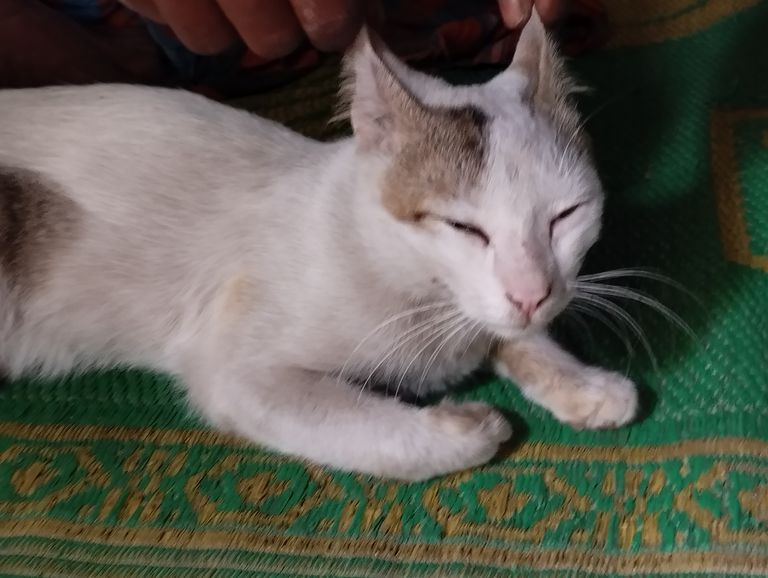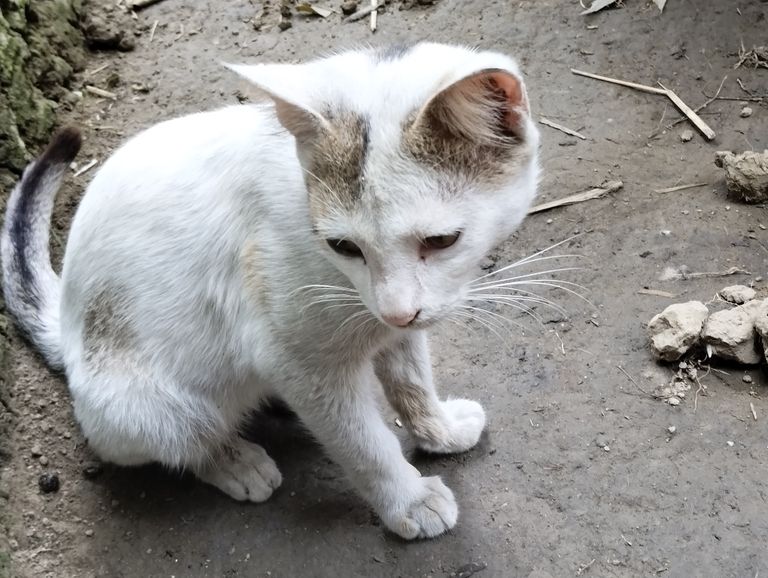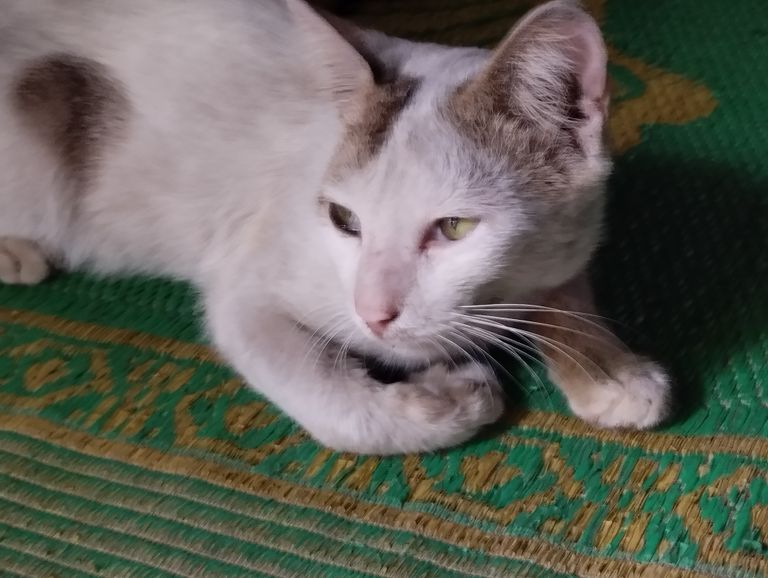
Is Keeping a Cat Permissible in Islam?
Cats are one of the most beloved pets in the world. They are known for their cleanliness, affectionate nature, and independent personality. Many Muslims wonder whether keeping a cat as a pet is permissible in Islam. This article explores the Islamic perspective on keeping cats, their treatment, and the responsibilities of pet ownership.
The Status of Cats in Islam
Islam teaches kindness and compassion towards animals. Cats, in particular, hold a special place in Islamic tradition. Unlike dogs, which have specific restrictions regarding purity, cats are considered pure animals. There are several references in Islamic history and hadith that highlight the positive status of cats.
One of the most famous stories is about Abu Hurairah (RA), a companion of the Prophet Muhammad (PBUH). His name, which means "Father of the Kitten," was given to him because of his love for cats. He was often seen with a cat, showing how much he cared for them.
Hadith and Teachings About Cats
Several hadiths highlight the permissibility and virtue of keeping cats:
- Cats Are Pure Animals
The Prophet Muhammad (PBUH) stated:
"A cat is not impure. It is one of those creatures that freely roam around you."
(Abu Dawood, Tirmidhi)
This hadith indicates that cats are not najis (impure) and can live inside a Muslim household.
- A Woman Was Punished for Mistreating a Cat
The Prophet (PBUH) narrated a story about a woman who was punished in Hell because she locked up a cat and did not feed it or let it find food:
"A woman was punished because of a cat that she had confined until it died. She did not give it food or water, nor did she let it go free so it could eat from the insects of the earth."
(Bukhari, Muslim)
This hadith shows the importance of treating animals, including cats, with kindness and ensuring their well-being.
- Cats Can Drink from a Muslim’s Utensils
The Prophet (PBUH) allowed cats to drink from his ablution water. He even mentioned that if a cat drinks from a Muslim's vessel, it remains pure and does not become impure.
(Abu Dawood)
This hadith emphasizes the purity of cats and the permissibility of keeping them in the household.
Responsibilities of Cat Ownership in Islam
While keeping a cat is allowed in Islam, there are certain responsibilities that a Muslim must fulfill:
- Providing Food and Water
Islam strictly prohibits neglecting or abusing animals. A Muslim who keeps a cat must ensure that it is well-fed and given clean water.
- Providing Shelter and Medical Care
Cats must be given proper shelter and medical attention when needed. Islam encourages kindness towards all living beings, including animals.
- Not Selling Cats for Profit
There is a scholarly debate about whether selling cats is permissible. Some scholars believe that selling cats is discouraged or even prohibited, as mentioned in certain hadiths. However, if the intention is to provide a good home for the cat rather than make money, many scholars permit it.
- Not Mutilating or Abusing Cats
Islam strictly forbids any form of abuse, cruelty, or mutilation of animals. This includes declawing or unnecessarily harming a cat.
- Ensuring Hygiene and Cleanliness
Cats are naturally clean animals, but their hygiene must be maintained. A Muslim must ensure that the home remains clean, especially for prayer areas.
Can Cats Affect Prayer in Islam?
Cats do not invalidate prayer in Islam. Unlike dogs, which have specific rulings regarding purity, a cat’s presence does not affect a Muslim’s prayer space. However, if a cat’s fur or saliva gets on clothes, they should be checked for cleanliness before prayer.
Conclusion
Keeping a cat is permissible in Islam and even encouraged, as long as the owner fulfills their responsibilities. Islam teaches kindness and respect for all living beings, including animals. The hadiths about cats highlight their purity, importance, and the need for compassionate treatment. Muslims who wish to keep a cat should ensure they provide proper care, food, water, and shelter. By doing so, they not only follow Islamic teachings but also earn rewards for their kindness.

Advantages of Keeping a Cat as a Pet
Cats are one of the most popular pets worldwide, adored for their independent nature, affectionate companionship, and low-maintenance care. Unlike dogs, which require regular walks and extensive attention, cats are self-sufficient and adapt well to different living conditions. In this blog, we will explore the numerous benefits of keeping a cat as a pet.
- Low Maintenance and Easy to Care For
One of the biggest advantages of having a cat is that they require minimal maintenance. Unlike dogs, cats do not need to be taken for walks or given constant attention. They groom themselves, use a litter box, and can be left alone for longer periods compared to other pets. This makes them a perfect choice for busy individuals or those who work long hours.
- Great for Small Living Spaces
Cats are ideal pets for apartment dwellers or people with limited space. Unlike larger pets, they do not require a backyard or a large living area to thrive. Cats are happy to curl up in cozy corners and are content with indoor play. Their compact size and ability to entertain themselves make them perfect for urban living.
- Provide Emotional Support and Reduce Stress
Cats are known to be great companions and provide emotional support to their owners. Studies have shown that spending time with a cat can help reduce stress, anxiety, and depression. The act of petting a cat releases endorphins, which can elevate mood and create a sense of relaxation. Their soft purring sound has a calming effect, making them excellent therapy animals.
- Keep Homes Pest-Free
Cats are natural hunters and have an instinct to chase and catch small animals. Having a cat at home can help keep rodents, insects, and other pests at bay. Even the presence of a cat can be enough to deter pests from entering a house, as their scent is a natural repellent to mice and rats.
- Independent but Affectionate
Unlike dogs that demand constant attention, cats are independent and can entertain themselves. However, they also enjoy bonding with their owners. Many cats develop strong attachments to their humans, showing affection by purring, rubbing against them, or sitting on their laps. This makes them a perfect balance of companionship and independence.
- Cost-Effective Pet Choice
Compared to dogs and other pets, cats are relatively low-cost to maintain. They require less food, do not need professional grooming, and have fewer medical expenses. Regular veterinary check-ups, vaccinations, and a healthy diet are all they need to stay healthy. Additionally, adopting a cat from a shelter is an affordable option and helps save a life.
- Improve Heart Health
Research has shown that owning a cat can lower the risk of heart disease and stroke. The calming presence of a cat helps reduce blood pressure, cholesterol levels, and stress, all of which contribute to better cardiovascular health. Cat owners are often found to have lower anxiety levels and improved overall well-being.
- Teach Responsibility and Compassion
Having a cat can be a great way to teach children responsibility and compassion. Taking care of a pet involves feeding, cleaning, and providing love and attention. This helps children develop empathy and a sense of responsibility towards animals and other living beings.
- Entertaining and Playful Companions
Cats are naturally curious and playful. They love to chase toys, climb on furniture, and explore their surroundings. Watching a cat’s funny antics can be highly entertaining and bring joy to any household. Playing with a cat also helps improve their physical and mental health, keeping them active and engaged.
- Long Lifespan and Strong Bonding
Cats have a relatively long lifespan, often living 12 to 20 years with proper care. This allows owners to form deep emotional bonds with their feline friends over the years. The long-term companionship of a cat provides a sense of stability and comfort in life.
Conclusion
Keeping a cat as a pet has numerous benefits, from being a low-maintenance companion to offering emotional support and improving overall health. Whether you live in a small apartment or a large home, a cat can adapt well and bring immense joy into your life. If you’re considering getting a pet, adopting a cat might be one of the best decisions you’ll ever make. Do you already have a cat? Share your experience in the comments.

How Cat Fur Can Affect Human Health
Cats are among the most beloved pets in the world, bringing joy and companionship to millions of households. However, cat fur, also known as cat dander, can pose certain health risks to humans. While most people can coexist with cats without any issues, others may experience allergic reactions or even more serious health complications due to exposure to cat fur. In this blog, we will explore the potential risks associated with cat fur and how to minimize any negative effects on human health.
- Understanding Cat Fur and Dander
Cat fur itself is not harmful, but it carries dander, saliva, and allergens that can trigger health problems in some individuals. Dander consists of tiny, microscopic skin flakes that cats shed along with their fur. These particles can remain in the air for long periods, settle on furniture, and even cling to clothing.
- Allergic Reactions to Cat Fur
a) Common Symptoms of Cat Allergies
People with allergies to cat fur may experience symptoms such as:
Sneezing and runny nose
Itchy or watery eyes
Coughing and wheezing
Skin rashes or hives
Shortness of breath
These allergic reactions occur due to a protein called Fel d 1, which is found in cat saliva, skin, and dander. When a cat grooms itself, the saliva spreads this allergen onto its fur, which then becomes airborne as the cat sheds.
b) Severe Allergic Reactions
For individuals with severe allergies, exposure to cat fur can lead to asthma attacks or anaphylactic reactions. These conditions require immediate medical attention and may necessitate complete avoidance of cats.
- Respiratory Problems and Cat Fur
Prolonged exposure to cat dander can cause or worsen respiratory issues, especially for individuals with pre-existing conditions such as:
a) Asthma
Cat allergens can trigger asthma symptoms, leading to wheezing, difficulty breathing, and tightness in the chest. Many asthma sufferers find that their symptoms worsen in homes with cats.
b) Bronchitis and Other Respiratory Infections
People with weak immune systems or chronic respiratory diseases may develop bronchitis or other lung infections due to prolonged exposure to cat fur and dander.
- Skin Irritations and Cat Fur
Some people experience contact dermatitis after touching cat fur. This condition results in:
Redness and itching
Swelling or hives
Dry or scaly skin
In rare cases, a cat’s fur may also carry fungal infections like ringworm, which can spread to humans through direct contact.
- Cat Fur and Eye Irritations
Cat fur and dander can get into the eyes, causing conjunctivitis (pink eye) or general irritation. Symptoms include:
Red, itchy, or swollen eyes
Excessive tearing
Sensitivity to light
Wearing protective glasses and washing hands after handling a cat can help reduce eye-related issues.
- Can Cat Fur Cause Stomach Problems?
While rare, ingesting cat fur accidentally can lead to gastrointestinal discomfort, especially for individuals with sensitive stomachs. If cat fur enters food or drinks, it may cause mild nausea or irritation. However, it does not usually cause serious harm unless the fur carries harmful bacteria or parasites.
- How to Reduce the Health Risks of Cat Fur
If you have a cat but want to minimize health risks, consider these preventive measures:
a) Regular Grooming and Bathing
Brush your cat frequently to reduce shedding.
Give your cat occasional baths to remove excess dander.
b) Cleaning Your Home
Vacuum carpets, furniture, and curtains regularly.
Use air purifiers to remove airborne dander and allergens.
Wash your bedding and clothes frequently.
c) Creating Allergy-Free Zones
Keep cats out of bedrooms and other restricted areas.
Use hypoallergenic covers on pillows and mattresses.
d) Personal Hygiene
Wash your hands after petting your cat.
Change clothes if you have excessive exposure to cat fur.
e) Medical Solutions
Take antihistamines or allergy medications if necessary.
Consult an allergist if symptoms persist or worsen.
Conclusion
While cat fur is generally harmless for most people, it can cause allergies, respiratory problems, skin irritations, and even eye infections for some individuals. Understanding the risks and taking preventive measures can help cat owners maintain a healthy and comfortable environment. If you or a family member experience severe reactions to cat fur, consulting a doctor is recommended. By maintaining proper hygiene and cleanliness, you can continue to enjoy the companionship of your feline friend without compromising your health.

Cat Hair Shedding: Causes, Prevention, and Solutions
Cats are beloved companions known for their soft and fluffy fur. However, many cat owners face the issue of excessive shedding, which can be frustrating. While some shedding is normal, excessive hair loss may indicate an underlying problem. In this blog, we will explore the reasons behind cat hair shedding, how to manage it, and when to seek veterinary help.
Understanding Normal and Excessive Shedding
Shedding is a natural process that helps cats get rid of old or damaged fur. However, when shedding becomes excessive, it may be a sign of health issues.
Normal Shedding
Most cats shed fur throughout the year, with heavier shedding during seasonal changes (spring and fall).
Short-haired cats may shed less than long-haired breeds.
Shedding helps cats regulate their body temperature and remove loose hairs.
Excessive Shedding
When bald spots appear or shedding increases drastically, it can indicate an issue.
Other signs include excessive licking, scratching, or changes in fur texture.
Causes of Excessive Shedding in Cats
- Poor Diet
A cat’s diet plays a significant role in the health of its coat. Lack of essential nutrients, such as omega-3 fatty acids, vitamins, and proteins, can lead to weak hair and excessive shedding.
Solution:
Provide a balanced diet rich in high-quality animal protein and essential fatty acids.
Consult a vet to ensure your cat is getting proper nutrition.
- Allergies
Cats can develop allergies to food, environmental factors (pollen, dust), or even certain fabrics, leading to skin irritation and hair loss.
Solution:
Identify and eliminate allergens.
Consult a vet for allergy testing and treatment.
- Stress and Anxiety
Stress can cause excessive shedding and over-grooming in cats. Common stressors include changes in the home, new pets, loud noises, or separation anxiety.
Solution:
Provide a stable and stress-free environment.
Use calming pheromones or interactive toys to reduce anxiety.
- Fleas, Mites, and Parasites
External parasites cause intense itching, leading to excessive scratching and fur loss. Flea allergies can also cause significant shedding.
Solution:
Regularly check for fleas and use vet-recommended flea treatments.
Keep your cat’s living area clean and pest-free.
- Skin Infections and Diseases
Fungal infections like ringworm or bacterial infections can cause patches of hair loss and irritated skin.
Solution:
If you notice redness, scabs, or circular bald patches, seek veterinary treatment.
Maintain proper hygiene and grooming.
- Hormonal Imbalances
Thyroid disorders, particularly hyperthyroidism, can lead to excessive shedding. Hormonal changes in pregnant or lactating cats may also cause hair loss.
Solution:
If shedding is accompanied by weight loss, increased thirst, or hyperactivity, consult a vet.
Routine health check-ups can help detect hormonal imbalances early.
- Aging and Genetics
Older cats tend to shed more due to changes in metabolism and skin health. Certain breeds, such as Maine Coons and Persians, naturally shed more than others.
Solution:
Regular grooming can help manage shedding.
Provide senior cats with a diet rich in essential nutrients to support coat health.
How to Reduce Shedding in Cats
While shedding cannot be stopped completely, these steps can help reduce excessive hair loss and keep your home fur-free.
- Regular Brushing
Brush your cat’s fur at least 2-3 times a week (daily for long-haired breeds).
Use the right brush:
Short-haired cats: Rubber brush or bristle brush
Long-haired cats: Metal comb or slicker brush
Brushing removes loose fur, prevents mats, and stimulates healthy hair growth.
- Proper Nutrition
Feed high-quality cat food with essential fatty acids (omega-3 and omega-6).
Include supplements like fish oil for better coat health.
Ensure your cat stays hydrated, as dehydration can lead to dry skin and excessive shedding.
- Regular Baths and Skin Care
Bathe your cat occasionally using a mild, cat-friendly shampoo.
Avoid frequent baths, as they can strip natural oils and cause dry skin.
Wipe your cat with a damp cloth to remove loose fur between grooming sessions.
- Stress Management
Create a calm and stable environment for your cat.
Provide interactive toys, scratching posts, and a cozy resting area.
